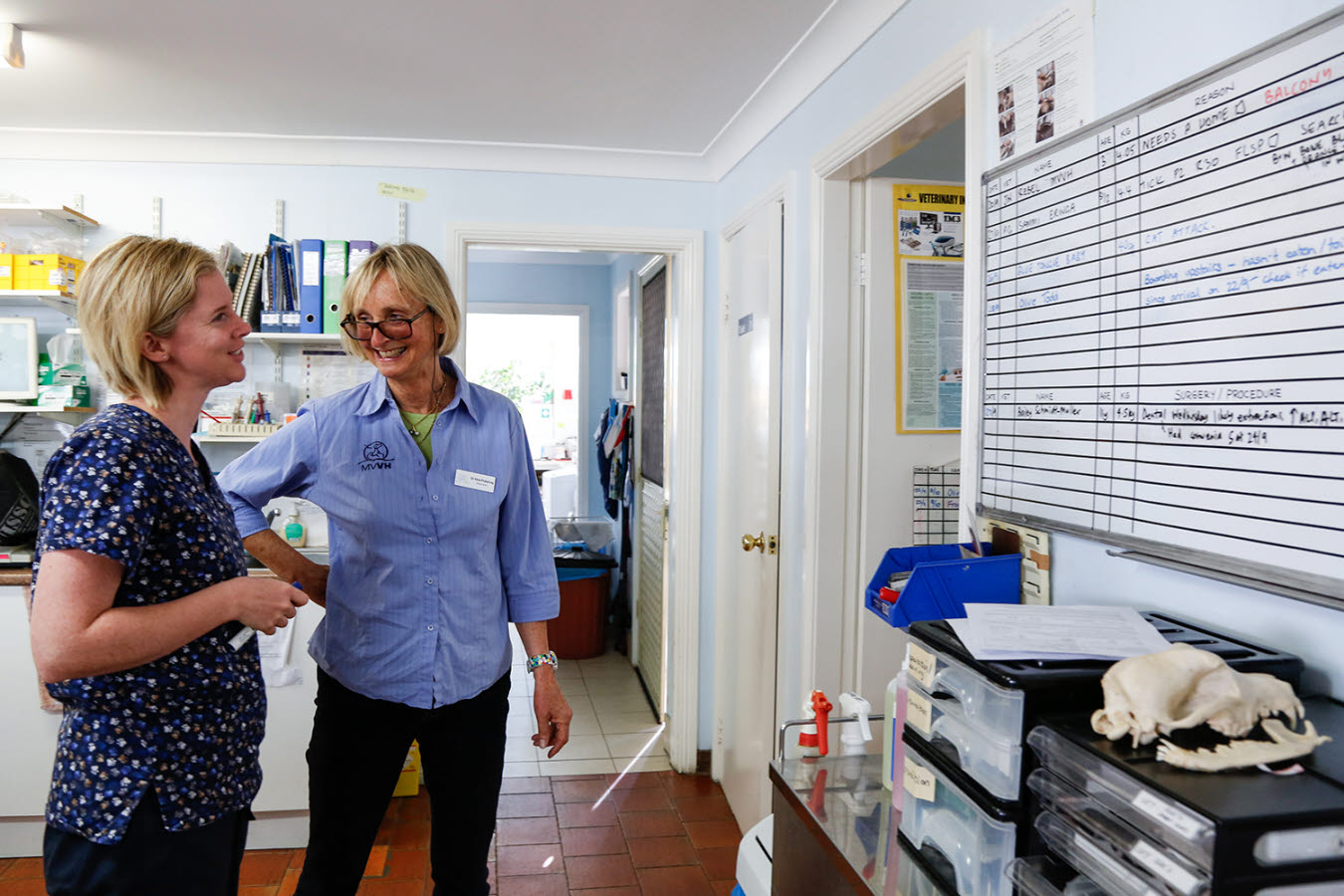
An overwhelming message from the Veterinary Business Group (VBG) stream at the AVA Annual Conference in Perth was the need to utilise veterinary nurses correctly. The current labour shortage of qualified experienced veterinarians is pushing some to their limits, which is not only taxing on the practice but more so to the individuals themselves.
In order to relieve such stressors, better utilisation of veterinary nurses in practice is recommended. This will not only help improve the mental health and wellbeing of veterinarians, but it will also have a positive economic impact on the practice.
Optimising team ratios
A 2018 report commissioned by the Australian Industry and Skills Committee (AISC) found that there are 9,300 veterinary nurses (not including kennel/ stable hands, receptionists or vet technicians) and 13,000 registered veterinarians – 10,000 of whom are in practice. This equates to a ratio of less than one vet nurse to each veterinarian.
In the United Kingdom, staffing levels that deliver optimum productivity and profitability are one veterinarian to two registered vet nurses, and one veterinarian to 1.5 customer service and admin team members.
Data from leading UK accountancy firm Hazelwoods shows that revenue increases as the registered veterinary nurse team expands, there is a clear uplift in revenue per full-time equivalent veterinarian when there are more nurses employed. Why? When more nurses are present, veterinarians undertake fewer routine tasks and their workloads can accommodate more complex procedures that command higher fees.
Whilst comparable Australian data does not currently exist, initial limited sample size information gathered by Tony Thelander from ValuVet shows that the current Australian norm of one veterinary to one nurse does not deliver the same improvements in turnover.
Of course, the veterinary to nurse ratio model does not operate in isolation as there are many other variable factors which influence profitability - operating a reasonable fee scale, collecting all fees, location demographics, type of practice, management practices, and so on.
Fundamentally there is still clearly a need to better utilise the skills of veterinary nurses in practice, and the UK has an established business model for doing just that.
Veterinarians do what they do well, the nurse team do what they do well and by employing dedicated reception team members, nurses are freed from the need to cover the front desk, enabling a dynamic shift from the somewhat traditional role of ‘nurse/ receptionist’ within the practice.
Veterinarians can then concentrate on diagnosis and treatment, along with focusing on better communication and building client relations. Onswitch's Alison Lambert has undertaken a series of workshops across Australia in recent years that prove the positive commercial effects this model can have. Working as a team, veterinary nurses undertake procedural plans such as bloods, catheter placement, fluid setup, etc., making better use of their skills in providing a work up for the patient and allowing time for the vet to determine the best outcome for the patient.
Using this method, multiple cases can be worked up, with vet nurses collecting and reporting back information without the need for vets to carry out this task themselves, whilst the veterinary nurses simply hold the patient. Ultimately, job satisfaction and retention levels for both veterinarians and veterinary nurses increase.
Developing successful synergy in-practice requires commitment and communication, veterinarians will need to discuss shared expectations of such increased responsibility for the veterinary nurse team.
Veterinary nurses are aware of the boundaries of not diagnosing; this is a distinction that must be maintained but there is no reason other than lack of competence for a specific task not to be undertaken. Competencies can be built with time, so training and development of the team is key if this transition phase to a new way of working is to be successful.
The UK, America and Canada already work to the suggested ratios and the proof is in the numbers. Delegate to your nurses. They will thank you for it, your vets will thank you and overall attrition rates will decrease whilst business performance improves.
Source:
https://www.hazlewoods.co.uk/sectors/vetaccountants.aspx
https://nationalindustryinsights.aisc.net.au/ industries/animal-care-and-management/ veterinary-nursing
This article originally appeared in the July 2019 Australian Veterinary Journal.
